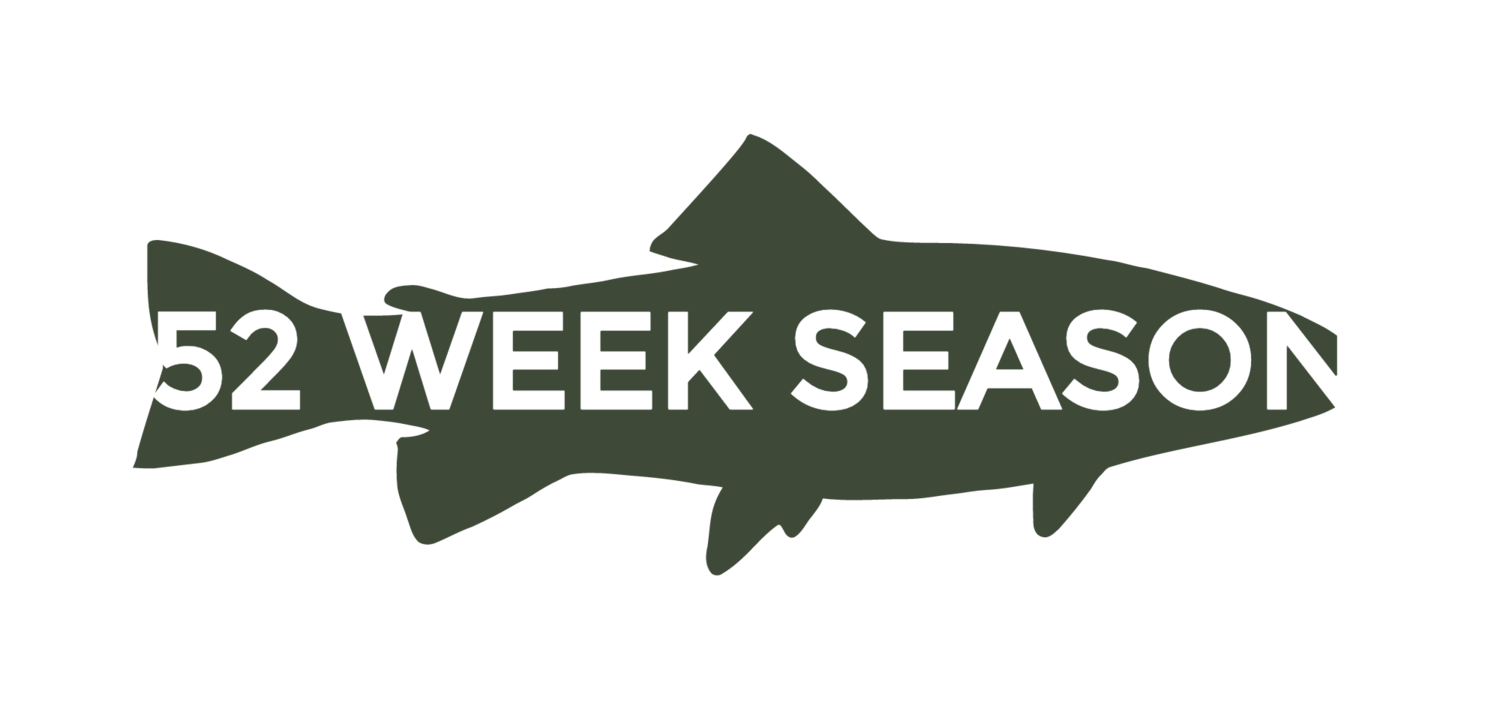Introducing 52 Week Season
If you want to get good at something, talk to the experts" -- Lefty Kreh
Thanks for visiting 52 Week Season!
52 Week Season is a project to interview a different mid-Atlantic hunting or fishing guide, outdoor expert, or business that makes its living outdoors, each week for a year, with the mindset that there is some kind of critter to chase in our region every week of the year.
Within a few hours' drive, we can fish for native brookies in high Blue Ridge streams, rocks on the Chesapeake, and be on the Gulf Stream for blue marlin. We have reds to the south and steelhead to the north. We're also at the crossroads of some of the best migratory routes on the continent, including Canada geese, Spanish mackerel, and American shad.
The region is also blessed with bounties of blue crabs in the summer, oysters in the winter, and fertile farms that make for big bucks and good whiskey.
We also sit on the border of north and south and on the fall-line between coastal and mountain.
It's no accident that Washington was built here at these crossroads, and General Washington couldn't have won independence without the trusty shots of both Pennsylvania rifelmen and Carolina shotgunners.
We also sit on another divide, the fall-line between freshwater and saltwater. It's the highest navigable point up the tidal rivers, and every spring anadromous fish like shad and perch pile up at the fall-line along the great rivers like the Delaware, Potomac, and James. To the east of that line is the land of salt, sand, and Wawas, and to the west is the land of mountains, mud, and Sheetz.
That's just scratching the surface -- there's really something for every week of the year in the mid-Atlantic.
So what is the "Mid-Atlantic"?
One of my favorite descriptions is the boundaries of the Chesapeake Bay watershed featured in William Warner's Beautiful Swimmers:
"The Bay’s entire watershed extends north through Pennsylvania to the Finger Lakes and Mohawk Valley country of New York, by virtue of the Susquehanna, the mother river that created the Bay. To the west it traces far back into the furrowed heartland of Appalachia, but one mountain ridge short of the Ohio-Mississippi drainage, by agency of the Potomac. To the east the flatland rivers of the Eastern Shore rise from gum and oak thickets almost within hearing distance of the pounding surf of the Atlantic barrier islands. To the south, Bay waters seep through wooded swamps to the North Carolina sounds, where palmettos, alligators and great stands of bald cypress first appear."
____
-- Patrick Ottenhoff, Washington, DC


